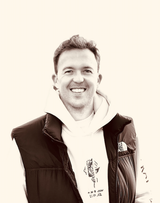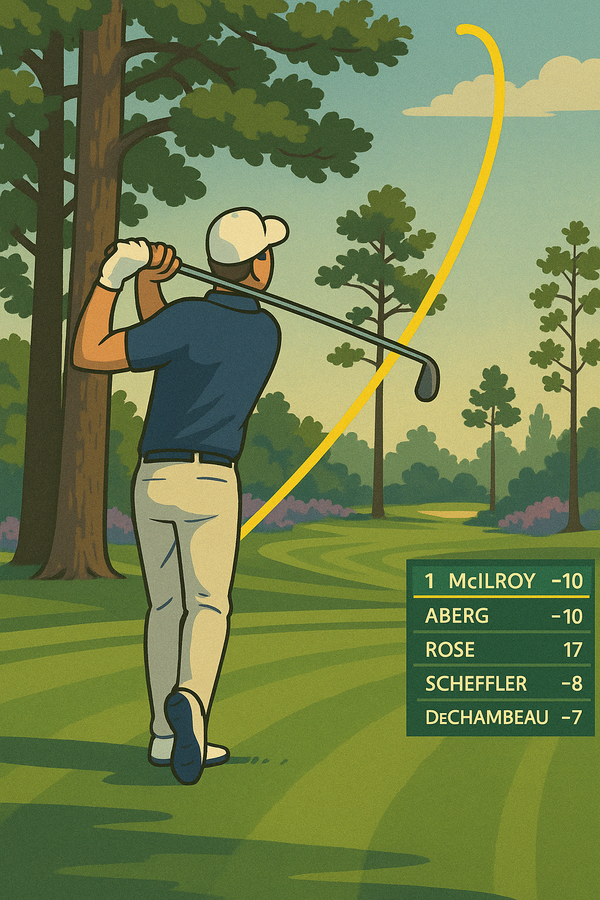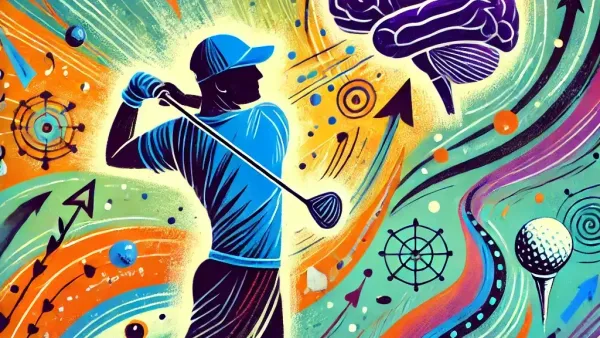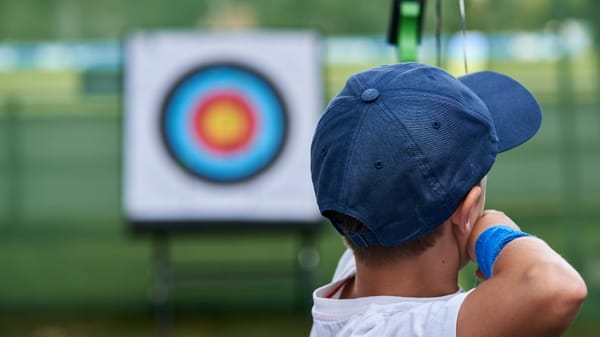The Science of Memory: Making Golf Instruction Last

Every golf instructor has experienced that moment of disappointment: A student who performed brilliantly during their lesson returns a week later, and it's as if time has reversed itself. Their carefully corrected swing has reverted to old patterns, their improved technique has vanished, and weeks of progress seem to have evaporated. This phenomenon isn't a reflection of the student's dedication or the instructor's teaching ability—it's a fundamental aspect of how our brains process and retain information, known as the Forgetting Curve.
Understanding Memory's Natural Decline
In the 1880s, psychologist Hermann Ebbinghaus made a revolutionary discovery about human memory through his meticulous research. He found that our ability to retain new information follows a predictable pattern of decay—what we now call the Forgetting Curve. The implications of his findings are sobering: without proper reinforcement, we lose approximately half of what we learn within just one hour of learning it. By the 24-hour mark, that loss can extend to 70% of the original information.
This natural memory decline has profound implications for golf instruction. When we teach a new grip technique or adjust a student's swing path, we're not just sharing information—we're asking their brain to create new neural pathways while competing with deeply ingrained habits that may have developed over years or even decades.
The Neuroscience Behind Failed Swing Changes
To understand why golf students struggle to retain new techniques, we need to examine how the brain processes and stores new information. Several key factors influence this process:
Cognitive Processing Limitations
The human brain, despite its remarkable capabilities, has finite processing capacity. During a typical golf lesson, students often receive multiple technical adjustments—they might need to modify their grip, adjust their stance, and change their swing tempo simultaneously. This creates what neuroscientists call cognitive overload, where the brain simply cannot process and store all the new information effectively.
Neural Competition
Every time a golfer practices their swing, they strengthen specific neural pathways in their brain. When these pathways represent incorrect techniques, they become deeply embedded through repetition. New swing changes must literally compete with these existing neural connections, and without sufficient practice, the old pathways remain dominant.
The Emotion-Memory Connection
Recent neuroscience research has revealed the crucial role emotions play in memory formation. The brain's emotional center, the amygdala, helps determine which memories are important enough to retain. When students become frustrated or anxious during practice, these negative emotions can actually inhibit the formation of new motor patterns and reinforce old habits.
Evidence-Based Strategies for Lasting Improvement
Understanding the brain's learning mechanisms allows us to develop more effective teaching strategies. Here are four research-backed approaches that can help overcome the Forgetting Curve:
1. The Power of Spaced Repetition
Spaced repetition isn't just about practicing regularly—it's about strategically timing those practice sessions to maximize retention. Research shows that reviewing information at gradually increasing intervals (for example, after 1 hour, 1 day, 3 days, and 1 week) creates stronger neural pathways than cramming all practice into a single session.
For golf instruction, this means:
- Breaking down lesson content into smaller, manageable segments
- Scheduling brief review sessions at specific intervals
- Gradually increasing the time between practice sessions as skills become more ingrained
2. Active Recall Through Retrieval Practice
Cognitive science has demonstrated that actively retrieving information strengthens memory more effectively than passive review. This principle, known as retrieval practice, can be integrated into golf instruction by:
- Having students explain techniques back to you in their own words
- Asking them to demonstrate proper form without guidance
- Encouraging self-assessment during practice sessions
3. Systematic Skill Building Through Scaffolding
The concept of scaffolding comes from educational psychology and involves building complex skills through a carefully structured progression. In golf instruction, this means:
- Starting with foundational movements before advancing to complex techniques
- Ensuring mastery of each component before adding new elements
- Creating clear connections between previously learned skills and new concepts
4. The Role of Emotional Intelligence in Learning
Modern neuroscience has revealed that emotional state significantly impacts learning and memory formation. Creating optimal learning conditions involves:
- Maintaining a positive, supportive learning environment
- Teaching stress management techniques for high-pressure situations
- Building confidence through achievable goals and consistent feedback
Implementing a Brain-Friendly Lesson Structure
Based on these principles, here's an optimized approach to structuring a 30-minute golf lesson:
Initial Assessment (5 minutes)
During the warm-up period, observe the student's current technique while engaging them in casual conversation to establish a relaxed atmosphere. This dual-purpose approach allows you to assess both their physical form and emotional state.
Focused Instruction (10 minutes)
Introduce one significant change, explaining not just the how but the why behind the adjustment. Use analogies and visual aids to create multiple memory pathways for the new information.
Guided Practice (10 minutes)
Implement retrieval practice by having students demonstrate their understanding. Provide immediate feedback while maintaining a positive, growth-oriented environment.
Integration and Planning (5 minutes)
Conclude by helping students develop a specific practice plan that incorporates spaced repetition principles. Create concrete goals for the time between lessons and establish methods for tracking progress.
The Science of Lasting Change
The key to permanent improvement lies in understanding and working with our brain's natural learning processes rather than against them. By incorporating these evidence-based strategies into your teaching approach, you can help students build lasting muscle memory and develop confidence in their abilities.
Most importantly, remember that transforming a golf swing is not just about physical technique—it's about rewiring neural pathways through consistent, deliberate practice. When both instructor and student understand this fundamental truth, they can work together more effectively to achieve lasting improvements in performance.
As instructors, our role extends beyond teaching proper technique—we must become guides in the process of effective learning itself. By applying these principles of cognitive science to our teaching methods, we can help our students not just learn, but truly master the complex skills that make up the game of golf.




